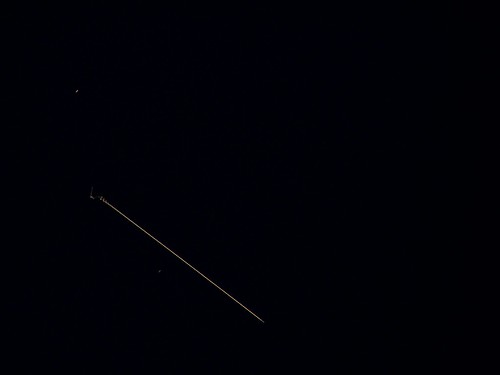Here are a few science-related things I thought worthy to pass along:

According to Heavens Above, I will have a chance to view the International Space Station in the morning, that is if the sky is clear.
Still seven years away from its rendezvous with Pluto, the New Horizons spacecraft was awoken from hibernation for the second annual checkout of all systems. The spacecraft and its team back on Earth will also undergo three months of operations as the New Horizons will make observations of Uranus, Neptune, and Pluto. But the first order of business was uploading an upgraded version of the software that runs the spacecraft’s Command and Data Handling system.
Pluto Spacecraft Gets Brain Transplant
After the August 21st sunspot debacle where SIDC reported a spot and initially NOAA didn’t, mostly due to the report from the Catania Observatory in Italy, we have another similar situation. On September 11th, a plage area developed.This is what passes for a sunspot these days
Dust Devils on MarsThe Surface Stereo Imager on NASA’s Phoenix Mars Lander caught this dust devil in action west of the lander at 11:49 a.m. local Mars time on Sol 104, or the 104th Martian day of the mission, Sept. 9, 2008.
Dust devils have not been detected in any Phoenix images from earlier in the mission, but at least six were observed in a dozen images taken on Sol 104.Dust devils are whirlwinds that often occur when the Sun heats the surface of Mars, or some areas on Earth. The warmed surface heats the layer of atmosphere closest to it, and the warm air rises in a whirling motion, stirring dust up from the surface like a miniature tornado.
CERN's LHC -A Video Tour of One of the Most Important Events of the 21st Century
High temperature, oxygen-free gasification turns carbon sources such as coal or biomass mostly into gaseous H2 and CO (syngas). These two gases can be converted via either chemical or biological means into a wide range of fuels--including gasoline, diesel, jet fuel, ethanol, methanol, etc etc. These carbon-to-fuel processes can be made very clean, with virtually no toxic byproducts remaining after the conversion process. Brian Westenhaus reports on progress coming directly from the long work of the Gas Technology Institute (GTI) in Illinois.
Gasification: Turning Any Carbon Into Any Fuel
The August anomaly is -0.10 (in terms of a degree Celsius).
HISTORICAL COMPARISON OF THE SINGLE DATA POINT
*It is 0.0547 degrees colder than July 2008
*It is 0.296 degrees colder than August 2007
*It is the coldest August anomaly since 2000
*Warmer anomalies can be found as far back as September 1979 (0.27). The data starts December 1978.
RANK
*19th warmest (12 coldest) August anomaly out of 30 data points since 1979
*223rd warmest (135th coldest) anomaly out of the total 357 monthly observations.






























0 comments :
Post a Comment